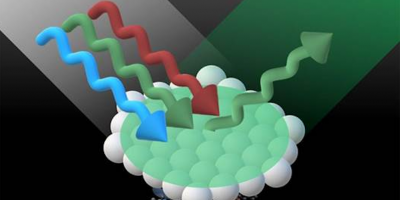Smart sensors are the jewel in the crown
Scientists have taken inspiration from the biomimicry of butterfly wings and peacock feathers to develop an opal-like material for use in smart sensors.
Scientists, led by the Universities of Surrey and Sussex, have developed colour-changing, flexible photonic crystals that could be used to develop sensors that warn when an earthquake might strike next.
The research draws on the Materials Physics Group’s (University of Sussex) expertise in the liquid processing of two-dimensional nanomaterials, Soft Matter Group’s (University of Surrey) experience in polymer colloids and combines it with expertise at the Advanced Technology Institute in optical modelling of complex materials. Both universities are working with the Sussex-based company Advanced Materials Development (AMD) Ltd to commercialise the technology.
The wearable, robust and low-cost sensors can respond to light, temperature, strain or other physical and chemical stimuli making them a promising option for cost-effective, smart, visual sensing applications in sectors such as healthcare and food safety.
In research, published by Advanced Functional Materials, the team outlines a method to produce photonic crystals containing a minuscule amount of graphene and which results in outputs that can be directly observed by the naked eye.
The material is intensely green under natural light, but the sensors change colour to blue when stretched, and turn transparent when heated.
Dr. Izabela Jurewicz, Lecturer in Soft Matter Physics at the University of Surrey’s Faculty of Engineering and Physical Sciences, said “This work provides the first experimental demonstration of mechanically robust yet soft, free-standing and flexible, polymer-based opals containing solution-exfoliated pristine graphene. While these crystals are beautiful to look at, we’re also very excited about the huge impact they could make to people’s lives.”
Potential applications for the sensors are time-temperature indicators (TTI) for intelligent packaging. The sensors are able to give a visual indication if perishables, such as food or pharmaceuticals, have experienced undesirable time-temperature histories. The crystals are extremely sensitive to even a small rise in temperature between 20 and 100 degrees C.
They can also be used in fingerprint analysis where their pressure-responsive shape-memory characteristics can reveal fingerprints, showing well-defined ridges, for biometric access systems.
They sensors’ mechanochromic response also makes them suitable as body sensors to help improve technique in sports players. They could also be used in a wrist band which changes colour to indicate to patients if their healthcare practitioner has washed their hands before entering an examination room.




